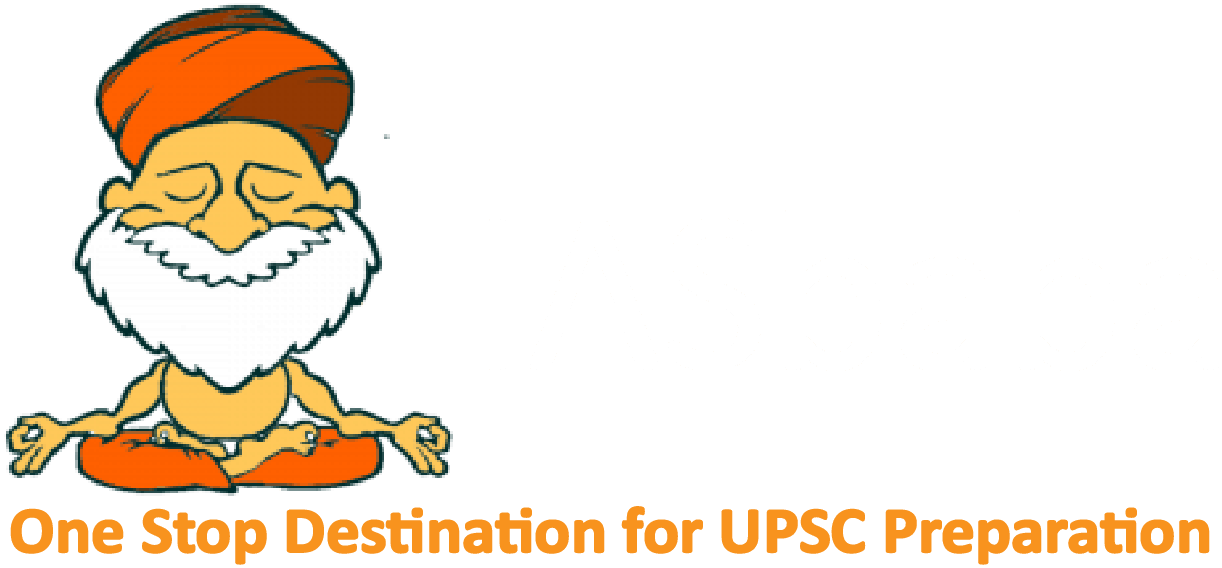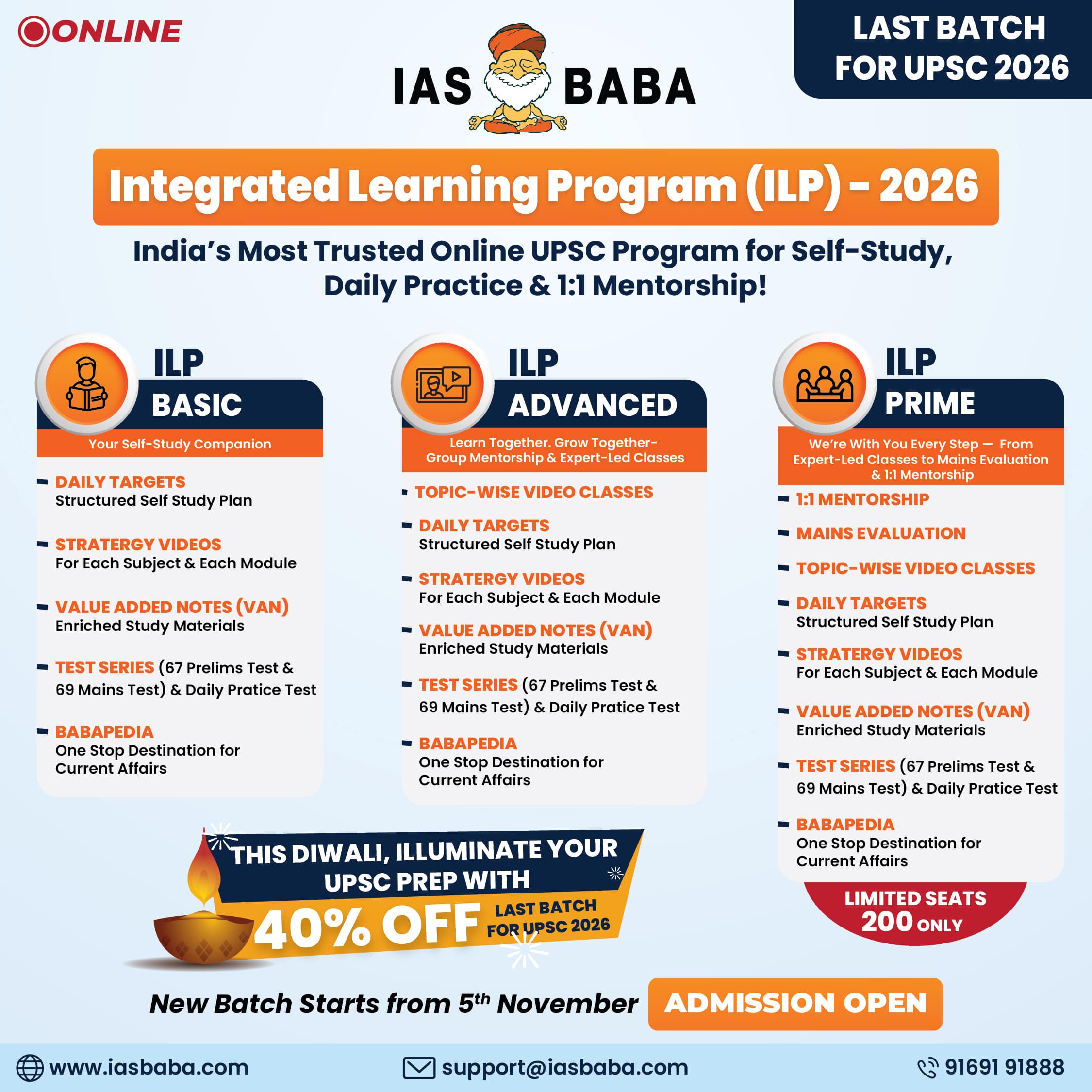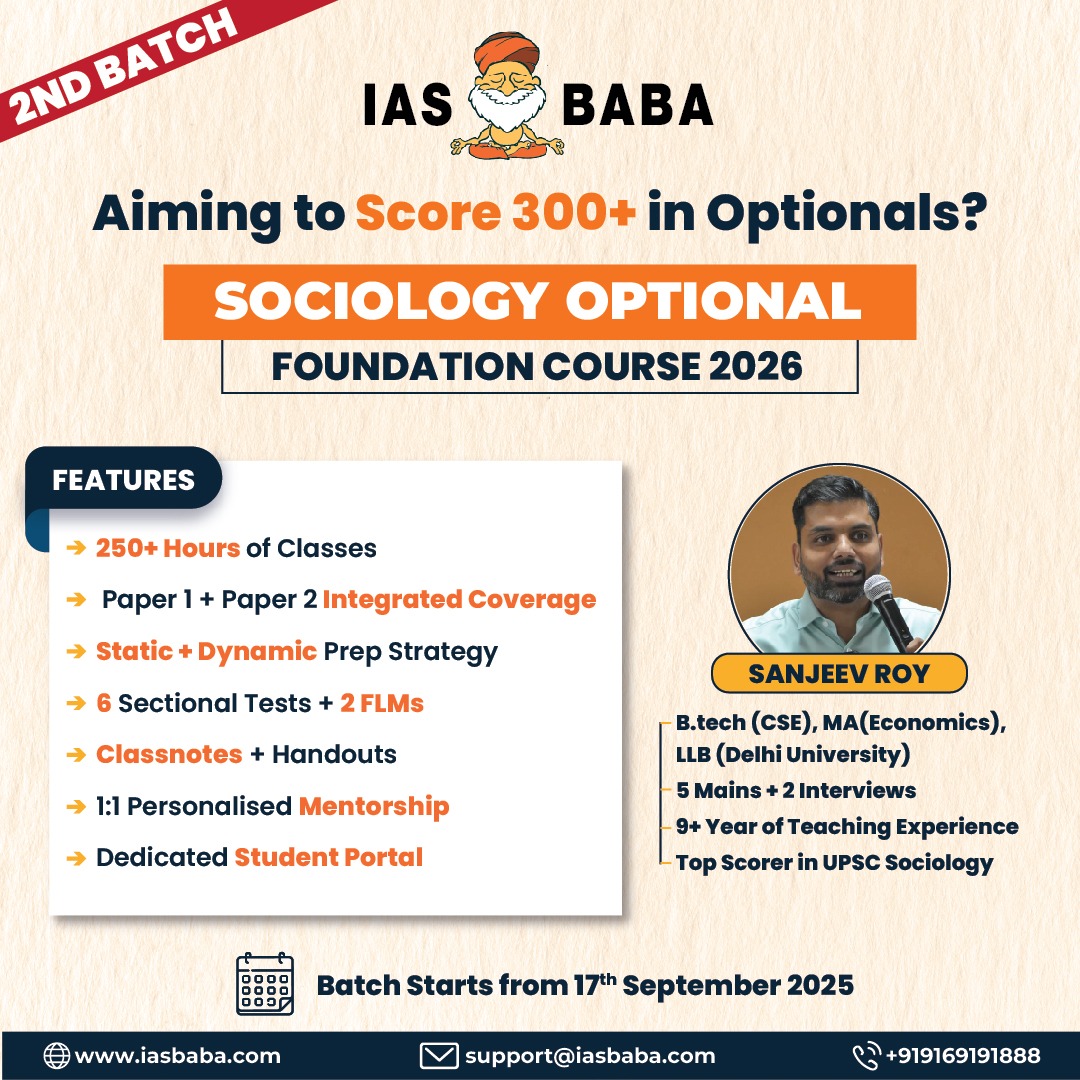IASbaba's Daily Current Affairs Analysis
rchives
(PRELIMS Focus)
Category: ENVIRONMENT
Context: Researchers at the Jawaharlal Nehru Tropical Botanic Garden & Research Institute (JNTBGRI), Thiruvananthapuram, have developed a wound-healing pad using the red ivy plant (Strobilanthes alternata), locally called murikooti pacha
Key points:
- Active Ingredient: A new molecule, acteoside, isolated from red ivy, is effective even at low concentrations (0.2%).
- Technology: Multi-layered pad created using electro-spun nanofiber.
- Features: Ultra-thin, biodegradable, non-toxic, FDA-approved polymers, with added neomycin sulfate.
- Function: Porous nanofiber structure enables gas exchange, aiding faster healing.
- Background: Builds on the plant’s traditional use for treating cuts and wounds.
Learning Corner:
Red Ivy Plant (Strobilanthes alternata)
- A medicinal plant commonly found in Kerala and other tropical regions.
- Locally known as murikooti pacha.
- Traditionally used in folk medicine for treating cuts, wounds, and skin ailments.
- Leaves are reddish-purple, giving the plant its “red ivy” name.
- Rich in bioactive compounds such as acteoside, known for antimicrobial, anti-inflammatory, and wound-healing properties.
- Recently studied by JNTBGRI scientists for developing advanced biodegradable wound-healing pads.
Source: THE HINDU
Category: SCIENCE AND TECHNOLOGY
Context : Researchers highlight the urgent need for updated strategies to combat Aedes mosquitoes, vectors of dengue, Zika, and chikungunya.
- Current Challenges: Pyrethroid vaporizers have limited effect; Wolbachia-based control is costly. Aedes are highly adaptable, bite during the day, and breed in tiny water collections.
- Personal Protection: DEET remains the standard repellent, but safer alternatives like picaridin and 2-undecanone are gaining attention.
- Community Action: Training communities to eliminate stagnant water reduced dengue cases by 26%; effective larvicides further lowered risk.
- Approach: A “bottom-up” strategy is needed—empowering people with knowledge and affordable tools, alongside government campaigns like “10 minutes at 10 am.”
- Policy Call: Advocates a national mission combining large-scale control with community-led initiatives.
Learning Corner:
Note on Dengue, Zika, and Chikungunya and Their Vectors
- Dengue:
- Viral disease caused by Dengue virus (Flavivirus).
- Symptoms: high fever, severe headache, muscle/joint pain, rash; in severe cases, dengue hemorrhagic fever/shock.
- Vector: Aedes aegypti (primary) and Aedes albopictus (secondary).
- Zika:
- Caused by Zika virus (Flavivirus).
- Symptoms: mild fever, rash, conjunctivitis; major concern is birth defects (microcephaly) when pregnant women are infected.
- Vector: Aedes aegypti and Aedes albopictus.
- Chikungunya:
- Caused by Chikungunya virus (Alphavirus, Togaviridae family).
- Symptoms: sudden high fever, severe joint pain (often long-lasting), headache, rash.
- Vector: Aedes aegypti and Aedes albopictus.
All three diseases are mosquito-borne viral infections, primarily transmitted by day-biting Aedes mosquitoes.
Source: THE HINDU
Category: HISTORY
Context: On September 11, 1893, Swami Vivekananda delivered his historic speech at the Parliament of the World’s Religions in Chicago.
- Event: Began with “Sisters and Brothers of America,” receiving a two-minute standing ovation.
- Context: Presented India’s philosophy of Vedanta at a time of Western dominance.
- Message: Advocated universal tolerance, acceptance, and harmony of all religions, condemning sectarianism and fanaticism.
- Reaction: Audience was deeply moved; his scholarship and presence were widely praised.
- Legacy: Marked the entry of Vedanta and Indian spirituality into the West, influencing global thinkers and laying roots for today’s yoga and wellness movement.
Learning Corner:
Swami Vivekananda (1863–1902)
- A disciple of Ramakrishna Paramahamsa and founder of the Ramakrishna Mission.
- Played a key role in spreading Vedanta and Yoga to the West.
- Gained worldwide recognition after his speech at the Parliament of the World’s Religions, Chicago (1893), where he spoke on religious tolerance and universal brotherhood.
- Advocated for social reform, education, and upliftment of the poor, emphasizing service to humanity as true worship of God.
- Stressed spiritual nationalism, inspiring India’s freedom movement with the idea of strength, self-confidence, and cultural pride.
- Passed away at the young age of 39 (1902), but left a lasting impact on philosophy, spirituality, and nation-building.
Source: THE INDIAN EXPRESS
Category: SCIENCE AND TECHNOLOGY
Context : NASA’s Perseverance rover may have found its strongest evidence yet of potential past life on Mars.
- Discovery Site: Rock sample from the dried-up river delta Cheyeva Falls.
- Findings: Presence of clay, silt, organic carbon, sulphur, oxidized iron, and phosphorus—ingredients favorable for microbial life.
- Significance: Marked as the closest step so far toward evidence of life, though not confirmed.
- Caution: Features may also result from non-biological processes; proof is not yet established.
- Next Steps: Sample collected for return to Earth under the future Mars Sample Return Mission, though funding challenges remain.
Learning Corner:
Mars rovers sent till date (up to 2025):
Sojourner (1997) – NASA
- First successful Mars rover, part of Mars Pathfinder mission.
- Tested mobility and technology; studied rocks and soil.
Spirit (2004–2010) – NASA
- Landed under Mars Exploration Rover mission.
- Explored Gusev Crater; discovered evidence of past water.
- Got stuck in sand in 2009; last contact in 2010.
Opportunity (2004–2018) – NASA
- Twin of Spirit, landed on Meridiani Planum.
- Found strong evidence of ancient water activity.
- Operated for nearly 15 years (planned for 90 days).
Curiosity (2012–present) – NASA
- Part of Mars Science Laboratory mission.
- Nuclear-powered rover in Gale Crater.
- Studied geology, climate, and conditions for microbial life.
- Still operational.
Perseverance (2021–present) – NASA
- Landed in Jezero Crater.
- Focused on astrobiology, searching for signs of ancient life.
- Collecting samples for future return to Earth.
- Also deployed Ingenuity helicopter, the first aircraft to fly on another planet.
Zhurong (2021–2023) – China, CNSA
- First non-NASA rover to operate successfully on Mars.
- Part of Tianwen-1 mission.
- Explored Utopia Planitia; confirmed presence of water-bearing minerals.
Source: THE INDIAN EXPRESS
Category: INTERNATIONAL
Context: India announced a $680 million special economic package for Mauritius after talks between PM Narendra Modi and Mauritian PM Navin Ramgoolam in Varanasi.
- Grant ($215M): For a national hospital, AYUSH centre, veterinary school, and helicopters.
- Grant-cum-Line of Credit ($440M): For airport ATC tower, road projects (M4, Ring Road), and port equipment.
- Budgetary Support ($25M): For port redevelopment and surveillance of the Chagos Marine Protected Area.
- MoUs Signed: Seven, covering science, technology, space (including a satellite tracking station).
- Focus: Strengthening infrastructure, jobs, healthcare, maritime security, and trade in local currencies.
Source: THE INDIAN EXPRESS
(MAINS Focus)
Introduction (Context)
Several European nations, including Spain, Ireland, and Norway, have formally recognised the State of Palestine in 2024–25.
The recognition reflects overlapping geopolitical, moral, and domestic pressures, reshaping Europe’s approach to the Israel–Palestine conflict.
Palestine – Brief introduction
- Palestine refers mainly to the West Bank, Gaza Strip, and East Jerusalem.
- The majority population is Arab.
- In 1947, the UN Partition Plan proposed separate Jewish and Arab states.
- In 1948, Israel was created, leading to mass displacement of Palestinians (Nakba).
- In 1967, Israel occupied the West Bank, Gaza, and East Jerusalem after the Six-Day War.
- The Palestinian Authority (PA) governs parts of the West Bank under Fatah
- Hamas has controlled Gaza since 2007.
- Key conflict issues include land disputes, refugees’ right of return, Israeli settlements, and Jerusalem’s status.
- Palestine has non-member observer status at the UN since 2012.
- The internationally backed solution is a two-state solution with East Jerusalem as Palestine’s capital.
What makes recognition urgent now?
- The war in Gaza after the October 7 (attack in Israel) attacks became the main trigger.
- Israel’s large-scale military response caused massive destruction and a humanitarian crisis.
- The situation shocked European nations and made the old status quo unacceptable.
- Further, Israeli Prime Minister Netanyahu openly rejected the two-state solution.
- South Africa’s case at the International Court of Justice accused Israel of violating the Genocide Convention. These legal proceedings added more pressure on Europe to act.
- For many governments, recognition of Palestine is now seen as essential to keep the two-state solution alive.
How has Ukraine reshaped Europe’s stance on sovereignty?
- Russia’s invasion of Ukraine in 2022 made Europe take a firm stand on national sovereignty and rejecting land grabs by force. This highlighted Europe’s inaction on Israel’s occupation of Palestinian territories.
- Intellectuals, media, and civil society pointed out the hypocrisy in Europe’s double standards.
- Governments are now under pressure to act with consistency. The “consistency gap” has become a liability for Europe’s credibility
- Recognising Palestine is seen as a way to realign policies with principles.
What are the domestic political pressures inside European countries?
- Public opinion in Europe has turned strongly in favour of applying international law equally in all conflicts.
- Human rights groups are actively campaigning, adding further pressure on governments.
- Young voters and progressive sections, who are key supporters of centre-left and green parties, are demanding action beyond statements.
- Governments fear that inaction could hurt them politically and electorally.
- Recognition of Palestine is seen as a way to show alignment with the moral expectations of their citizens.
Significance of recognition
- Strengthens the global push for a two-state solution by keeping it alive amid its erosion.
- Sends a symbolic message that Europe will not remain passive during the Gaza humanitarian crisis.
- Highlights Europe’s attempt to act consistently on international law and sovereignty, similar to its stand on Ukraine.
- Enhances Europe’s moral credibility and soft power on the global stage.
- Adds weight to Palestine’s standing in international forums like the United Nations.
- Signals a shift from viewing recognition as a “reward for peace” to treating it as a prerequisite for peace.
Challenges
- Recognition is largely symbolic and does not directly change the ground reality in Palestine. Israel rejects the move and continues with settlement expansion, limiting its practical impact.
- Could deepen internal divisions within Europe, as some states prefer caution due to historical responsibilities.
- Without concrete follow-up (economic or political pressure), recognition may be seen as symbolic posturing.
Conclusion
The recognition of Palestine by several European nations reflects a powerful moral and diplomatic signal aimed at reviving the two-state solution and reasserting Europe’s commitment to international law. For long-term peace, recognition must be complemented with sustained political engagement, humanitarian support, and pressure on all stakeholders to return to negotiations.
Mains Practice Question
Q The recognition of Palestine by European nations is more symbolic than transformative. Discuss. (250 words, 15 marks)
Introduction (Context)
The Great Nicobar Island Project is one of India’s most ambitious infrastructure and strategic development initiatives which comprises international container transshipment terminal, a greenfield airport, power plant, and township.
However, due to the region’s ecological sensitivity and the presence of Particularly Vulnerable Tribal Groups (PVTGs) like the Nicobarese and Shompen, the project has attracted both support for its strategic vision and concerns over ecological and social impacts.
About the project
- It is an integrated development project of strategic and national importance initiated by the Government of India.
- Components include:
- International Container Transshipment Terminal (ICTT): Capacity of 14.2 million TEU.
- Greenfield International Airport.
- 450 MVA gas and solar-based power plant.
- Township covering 16,610 hectares.
- Envisaged to transform Great Nicobar into a hub of maritime and air connectivity in the Indian Ocean Region.
Significance of the project
The project will:
- Enhance India’s naval presence and ability to secure sea lanes.
- Promote trade, logistics, and regional integration.
- Boost livelihood opportunities in the islands.
- Balance infrastructure growth with tribal welfare and ecological safeguards
- Counter growing Chinese presence in the Indian Ocean.
Initiatives for sustainable development
To meet the challenges associated with tribal welfare, biodiversity conservation, and disaster resilience, the government has taken the following steps.
Environmental
- A detailed Environmental Impact Assessment (EIA) was done. EIA is the study of how a project will affect the environment (forests, wildlife, air, water, etc.) before starting construction.
- An Environmental Management Plan (EMP) was prepared. It lists measures to reduce or “mitigate” negative effects during construction and operation.
- ₹81.55 crore has already been given to research institutes for wildlife conservation plans, even before construction began.
Disaster management
- To ensure safety, a risk assessment study was conducted that examined both human-caused risks (such as pollution or accidents) and natural disasters (like earthquakes, tsunamis, and cyclones). Based on this, a disaster management plan was prepared.
Tribal Welfare
- The project will not displace tribal groups such as the Nicobarese and the Shompen, whose only habitations in the project area are at New Chingen and Rajiv Nagar. A special committee has been set up to oversee the welfare of these tribes during both the construction and operational stages.
- Consultations were also held with experts, including the Anthropological Survey of India, to safeguard the rights and well-being of Particularly Vulnerable Tribal Groups (PVTGs). The Andaman and Nicobar administration has made budgetary provisions to ensure that tribal welfare measures continue during and beyond the project.
- The development plan for Great Nicobar Island follows the Shompen Policy, 2015 and Jarawa Policy.
- Shompen are a Particularly Vulnerable Tribal Group (PVTG) of the Andaman and Nicobar Islands who live in isolation and depend on forests.
- The policy says that any big development project on the island must be done only after consulting the Ministry of Tribal Affairs, Directorate of Tribal Welfare, and Andaman Adim Janjati Vikas Samiti (AAJVS).
- AAJVS (Andaman Adim Janjati Vikas Samiti) is a government body that looks after the welfare of tribal groups in the islands. Under the Jarawa Policy, 2004, it was declared the trustee (legal protector) of all PVTGs like Jarawa and Shompen.
- The Empowered Committee, a group of experts formed to review the project, has confirmed that Tribal interests will not be harmed and no tribal displacement (removal from their land) will be allowed.
Land development
- The project covers only 2% of the total area of Andaman and Nicobar Islands.
- About 130.75 sq. km of forest land will be diverted, which is just 1.82% of total forest area in the Islands.
- Around 65.99 sq. km will remain as a green zone, where no trees will be felled.
- As per the Forest (Conservation) Act, 1980, since A&N has more than 75% forest cover, compensatory afforestation can be done in other states.
- For this project, 97.30 sq. km in Haryana has been identified for tree plantation to make up for diverted forest land.
Way forward
- Strengthen monitoring mechanisms for environment and tribal safeguards.
- Build disaster-resilient infrastructure considering seismic risks.
- Ensure transparent consultations with tribal groups at every stage.
- Promote sustainable tourism & blue economy linkages.
- Focus on long-term ecological research to assess cumulative impacts.
Conclusion
The Great Nicobar Island Project is not merely an infrastructure plan but a strategic vision linking India’s economic ambitions with its national security imperatives in the Indo-Pacific.
If implemented with genuine ecological sensitivity and community participation, it could stand as a model for balancing economy, ecology, and security in India’s development trajectory.
Mains Practice Question
Q How does the Great Nicobar Island Project balance tribal welfare with strategic and developmental needs? (250 words, 15 marks)













